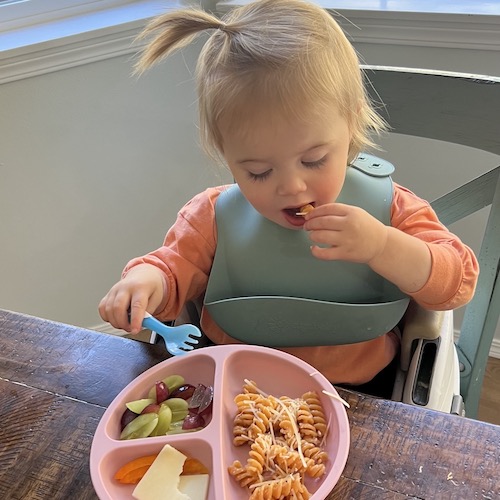Introduction
At one year old, children are ready to explore a wider variety of foods as they transition to family meals. This stage is crucial for developing healthy eating habits and preferences. Here are some nutritious and age-appropriate food ideas for 1-year-olds, focusing on balance and variety.
Nutritional Needs
At this age, toddlers require a balanced diet that includes carbohydrates, proteins, fats, vitamins, and minerals. Whole foods should be prioritized to support growth and development. While breast milk or formula may still be part of the diet, whole milk can also be introduced as a primary drink.
Meal Schedule
A typical day includes three main meals and two to three snacks. Meals should be varied and colorful, introducing different textures and flavors. Paying attention to hunger cues ensures the child eats according to their needs.
Breakfast Ideas
Starting the day with a nutritious breakfast is important for energy and growth.
- Oatmeal: Cooked oats can be mixed with mashed bananas or applesauce. Adding a pinch of cinnamon and a splash of milk enhances flavor.
- Scrambled Eggs: Softly scrambled eggs are easy to chew. Serve with small pieces of whole-grain toast.
- Pancakes: Whole-grain pancakes can be made with mashed fruits like bananas or blueberries. They can be served plain or with a thin layer of yogurt.
Lunch Options
Lunch should be balanced and satisfying.
- Vegetable Soup: A mild vegetable soup with soft-cooked carrots, peas, and potatoes offers a variety of nutrients. Serve with small pieces of bread.
- Mini Sandwiches: Whole-grain bread with fillings like avocado, hummus, or soft cheese provides a nutritious meal. Cut into small pieces for easy handling.
- Pasta: Small pasta shapes with a light tomato sauce and steamed vegetables make an enjoyable meal. Adding small pieces of cooked chicken or tofu can boost protein intake.
Dinner Ideas
Dinner can include family-friendly meals adapted for a toddler’s needs.
- Stir-Fried Rice: Cooked rice with finely chopped vegetables and scrambled eggs offers a balanced meal. Ensure vegetables are soft and easy to chew.
- Baked Fish: Soft fish fillets, baked with lemon and herbs, can be served with mashed potatoes and steamed broccoli.
- Casserole: A vegetable and cheese casserole with quinoa or brown rice provides a hearty option. Ensure ingredients are well-cooked and soft.
Snack Suggestions
Snacks help maintain energy levels and provide additional nutrients.
- Fruit Slices: Soft fruits like pears, peaches, and bananas cut into small pieces make nutritious snacks.
- Yogurt: Plain, full-fat yogurt can be served with a sprinkle of oats or small pieces of fruit.
- Cheese Cubes: Mild cheese cut into small cubes offers calcium and protein. Pair with whole-grain crackers for variety.
Hydration
Alongside meals, ensure that your toddler stays hydrated. Water should be the primary drink offered throughout the day. Whole milk can be served with meals, but limit juice intake due to its high sugar content.
Safety Considerations
Safety is crucial when introducing new foods.
- Choking Hazards: Avoid small, hard foods like nuts, whole grapes, and popcorn. Always cut food into small, manageable pieces and supervise meals.
- Allergy Awareness: Introduce new foods one at a time and monitor for any allergic reactions. Consult with a healthcare provider if there’s a family history of allergies.
Encouraging Independence
Allowing toddlers to feed themselves encourages independence and develops motor skills. Offering finger foods and using child-friendly utensils can make mealtime enjoyable and educational.
Conclusion
Feeding a 1-year-old involves offering a variety of nutritious and age-appropriate foods. By providing balanced meals and snacks, caregivers can support healthy growth and development while fostering a positive relationship with food. Flexibility and patience are key as toddlers explore new tastes and textures, setting the foundation for lifelong healthy eating habits.

